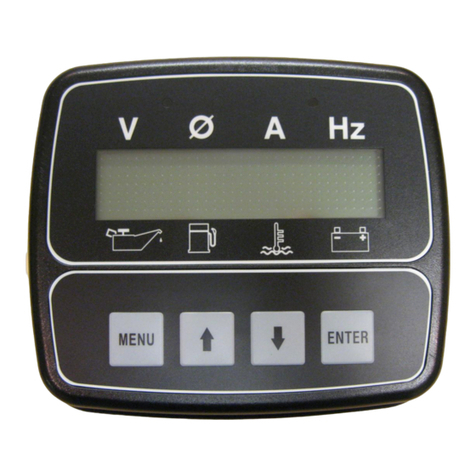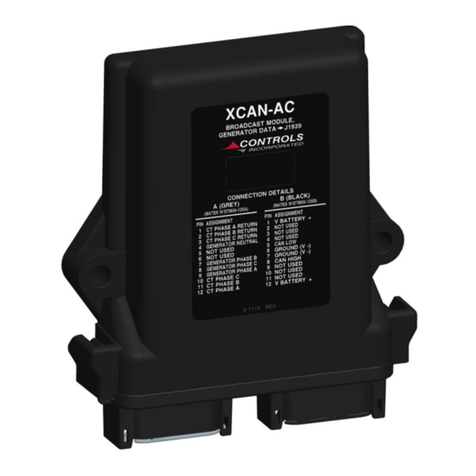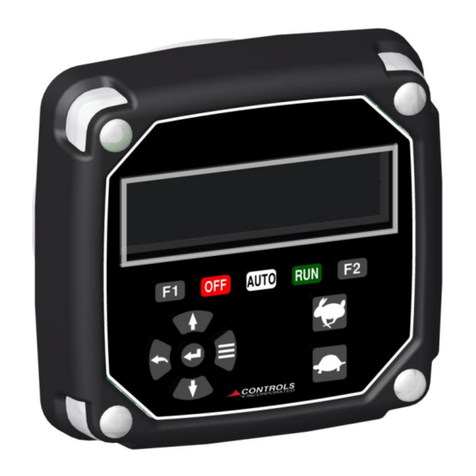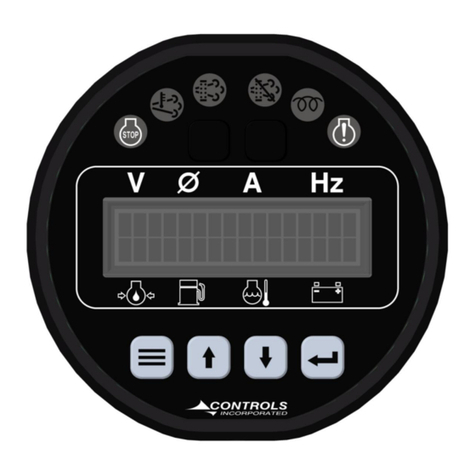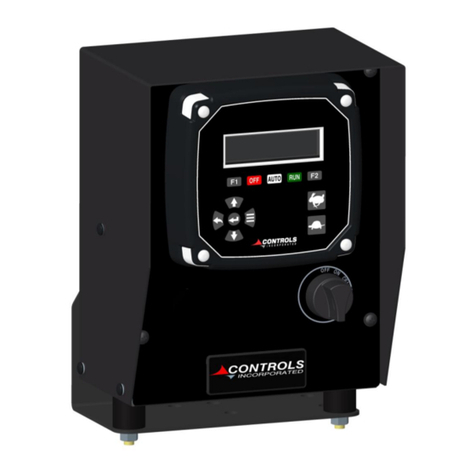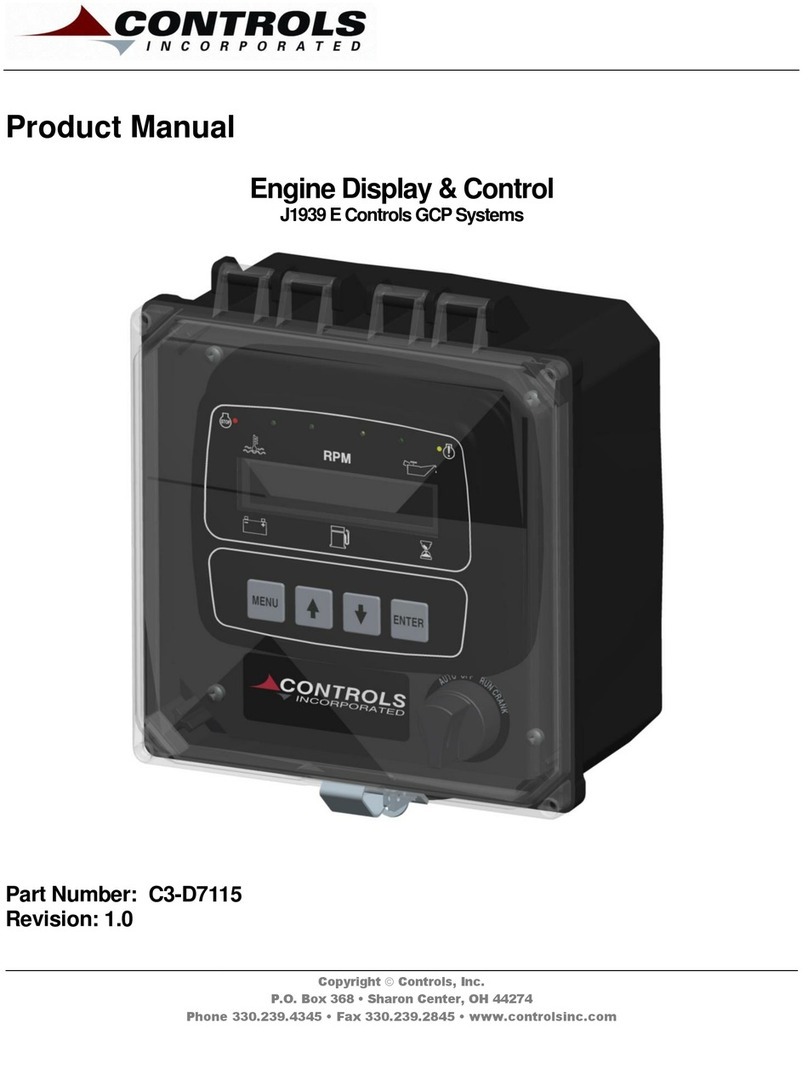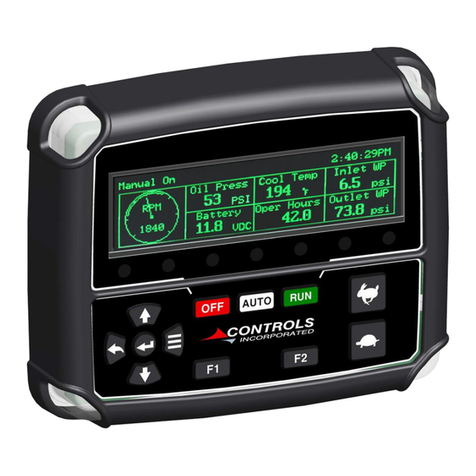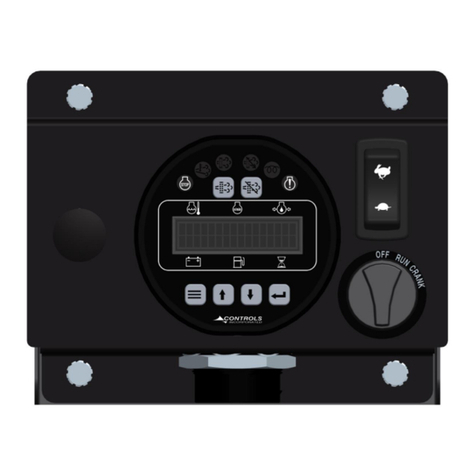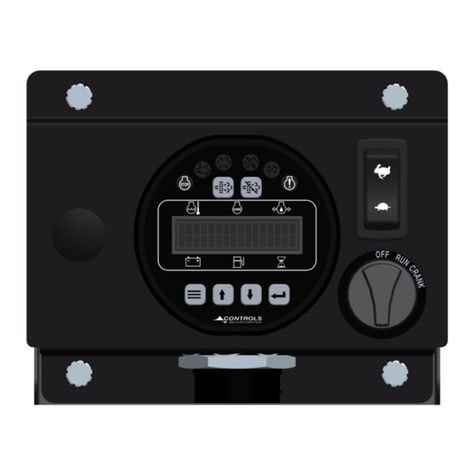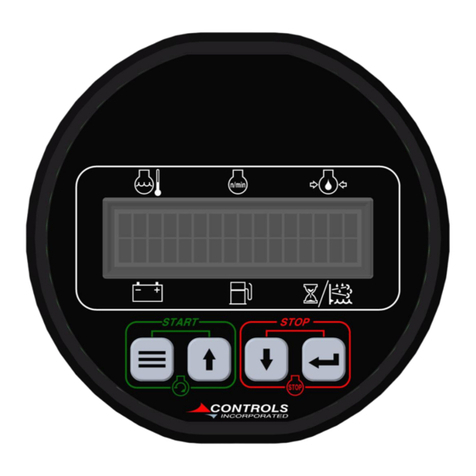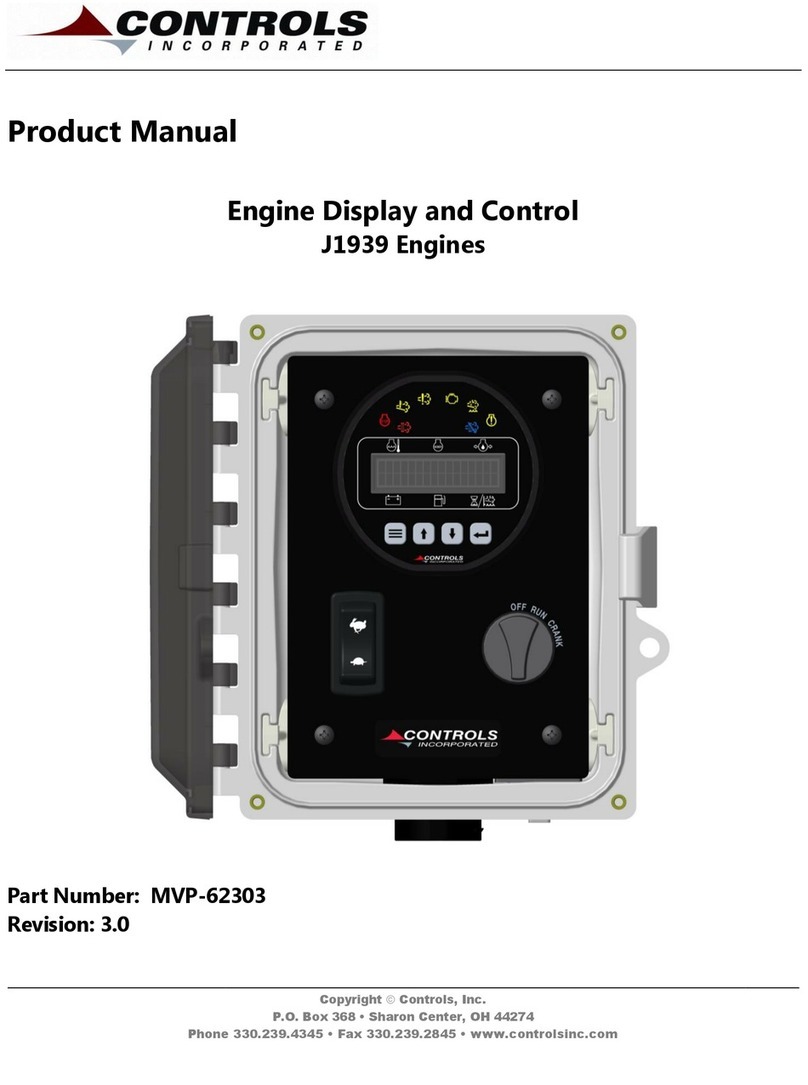
CONTROLS, INCORPORATED
C O N T R O L S Y S T E M S & S O L U T I O N S
- 5 -
MENU NAVIGATION
To access the control module menu system, power the unit and press the Menu button. While
pressing the menu button a message will appear to also press Enter to access.
Once you have accessed the menu system, the four key pad will be used for menu navigation and
therefore not available for engine speed control if the engine is running. The menu system is broken
into two main sections, the operator menu and the controller setup menu. The operator menu
contains information about the engine and control panel. The topics will vary based on the engine
type and control panel model. Pressing the Menu key will index the menu topic to the next item in
the list. The index is circular so you will eventually wrap around to the beginning of the operator
menu structure. Pressing the Enter key will index the topics backward. Once you have arrived at a
menu topic that you would like to explore more, press the Up arrow key. The Up arrow key will
index the screen each time it is pressed. Pressing the Down arrow key will index in the reverse order.
Pressing the Menu key at any time while in a topic will return you to the main menu topic heading.
To exit the menu, simply press the Menu and Enter keys simultaneously.
MENU SYSTEM
